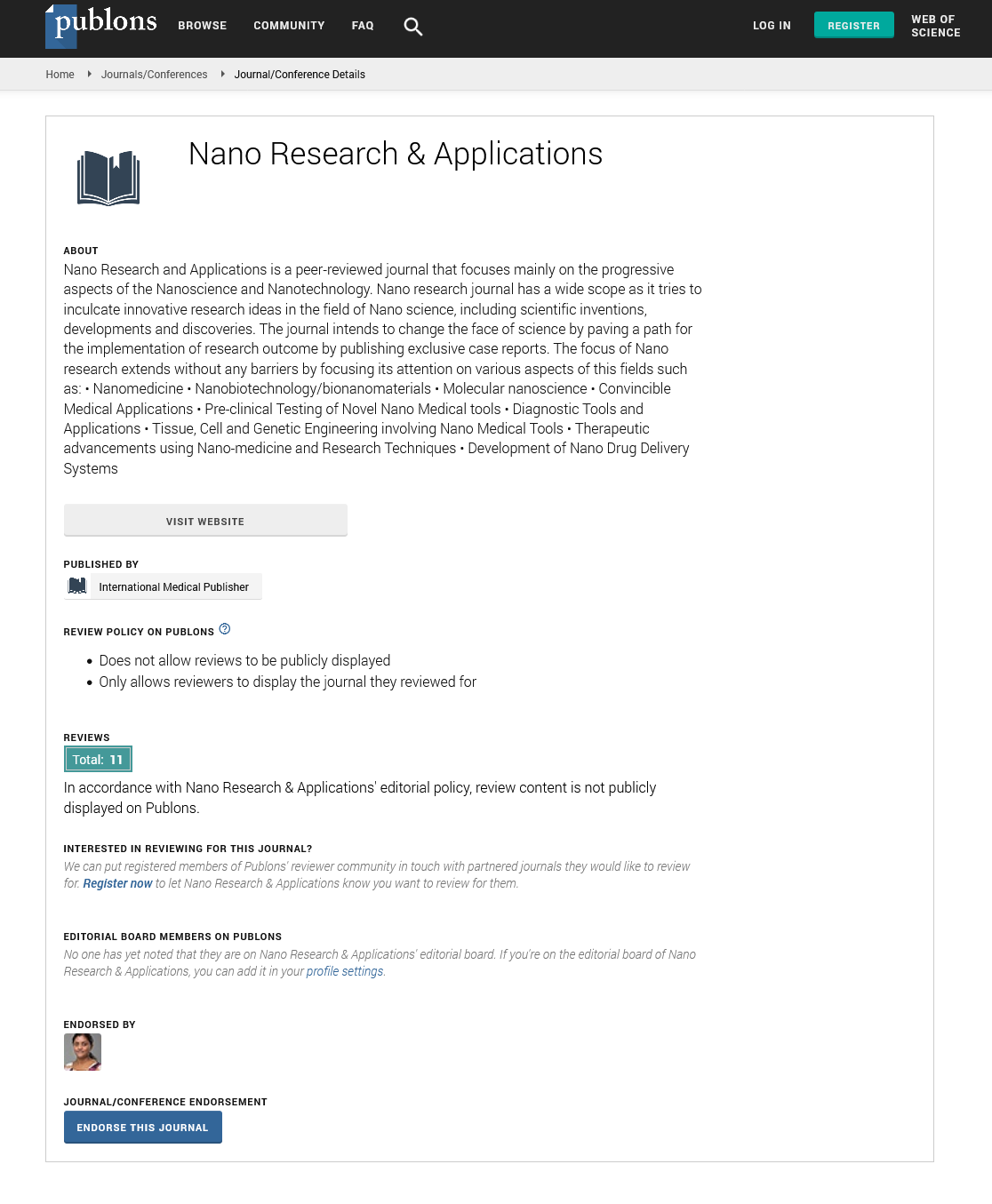ISSN : 2471-9838
Nano Research & Applications
Controlling microgel size by electrochemically induced volume phase transition
Joint Event on 26th International Conference on Advanced Nanotechnology & 2nd Edition of International Conference on Materials Technology and Manufacturing Innovations
October 04-05, 2018 Moscow, Russia
Marcin Karbarz
University of Warsaw, Poland
ScientificTracks Abstracts: Nano Res Appl
DOI: 10.21767/2471-9838-C5-020
Abstract
Microgels are polymer hydrogels or macromolecules that form, in a micro scale, three-dimensional networks filled with a solvent. Microgels are characterized by low viscosity and very high surface area, but the most intriguing property of these materials is their ability to change substantially their volume. This phenomenon is called the volume phase transition and is observed as the response of a polymer network to an external stimulus, such as change in temperature, pH, ionic strength and magnetic/electric field. In microgels, the change in volume is great and it is much quicker compared to regularsize hydrogels. These properties are useful in such potential applications as controlled drug delivery systems; catalysis and sensors. We have successfully synthesized a novel microgel the volume of which could be changed by using an electrochemical trigger. At appropriate potential and at human-body temperature the volume change was unusually high by more than one order of magnitude. The starting material was a thermoresponsive microgel built from N-isopropylacrylamide, sodium acrylate and N, N’-bisacryloylcystine as the cross linker. The gel has been modified with aminoferrocene through amid-bond formation. The influence of oxidation state of the ferrocene groups in the micro-gel on volume phase transition temperature was determined. The -S-S- groups from the N, N’-bisacryloylcystine linker were employed in the chemisorption of the microgels on the Au electrode surface and the formation of gel monolayers. It appeared that the microgel layers could be either in the shrunken or the swollen state depending on the oxidation number of the iron atoms in the ferrocene groups. The oxidation number could be changed electrochemically and the shrunken-swollen transformation could be repeated reversibly many times. The properties of the obtained materials were examined with dynamic light scattering technique, UV-V is spectroscopy, SEM and TEM microscopies and cyclic voltammetry. Recent Publications 1. Karbarz M, Mackiewicz M, Kaniewska K, Marcisz K, Stojek Z (2017) Recent developments in design and functionalization of micro- and nanostructural environmentally-sensitive hydrogels based on N-isopropylacrylamide. Applied Materials Today 9:516-532. 2. Marcisz K, Romanski J, Stojek Z, Karbarz M (2017) Environmentally sensitive hydrogel functionalized with electroactive and complexing-iron(III) catechol groups. Journal of Polymer Science, Part A: Polymer Chemistry 55:3236-3242. 3. Mackiewicz M, Marcisz K, Strawski M, Romanski J, Stojek Z, Karbarz M (2018) Modification of gold electrode with a monolayer of self-assembled microgels. Electrochimica Acta 268:531-538. 4. Mackiewicz M, Kaniewska K, Romanski J, Augustin E, Stojek Z, Karbarz M (2015) Stable and degradable microgels linked with cystine for storing and environmentally triggered release of drugs. Journal of Materials Chemistry B 3:7262-7270. 5. Mackiewicz M, Stojek Z, Karbarz M (2017) Unusual swelling behavior of core-shell microgels built from polymers exhibiting lower critical solubility temperature. European Polymer Journal 95: 314-322.
Biography
Marcin Karbarz’s scientific interest has focused on the obtaining new, advanced gel materials with the desired properties. The research is focused on functionalization of gels to get their needed properties. Among those properties are the gel abilities to undergo a volume phase transition under specified conditions, become electro-active and electro-sensitive, undergo reversible changes in their properties upon phase transition, bind/sorb certain individuals and release them in controlled manner, become sensitive to other / new environmental factors, self-heal and self-assembly.
E-mail: karbarz@chem.uw.edu.pl
Google Scholar citation report
Citations : 387
Nano Research & Applications received 387 citations as per Google Scholar report
Nano Research & Applications peer review process verified at publons
Abstracted/Indexed in
- Google Scholar
- China National Knowledge Infrastructure (CNKI)
- Directory of Research Journal Indexing (DRJI)
- WorldCat
- Publons
- Secret Search Engine Labs
- Euro Pub
Open Access Journals
- Aquaculture & Veterinary Science
- Chemistry & Chemical Sciences
- Clinical Sciences
- Engineering
- General Science
- Genetics & Molecular Biology
- Health Care & Nursing
- Immunology & Microbiology
- Materials Science
- Mathematics & Physics
- Medical Sciences
- Neurology & Psychiatry
- Oncology & Cancer Science
- Pharmaceutical Sciences
